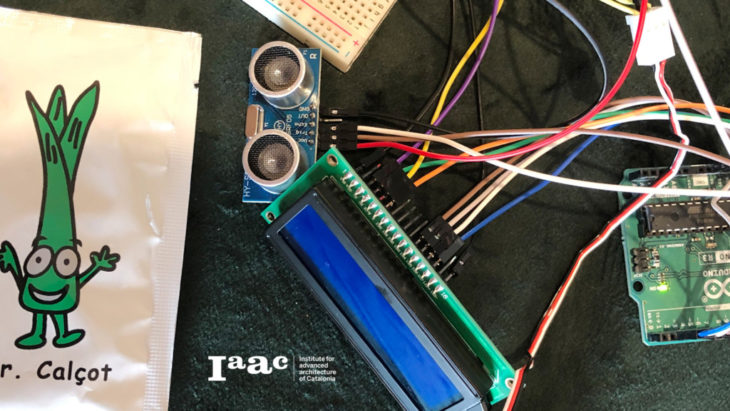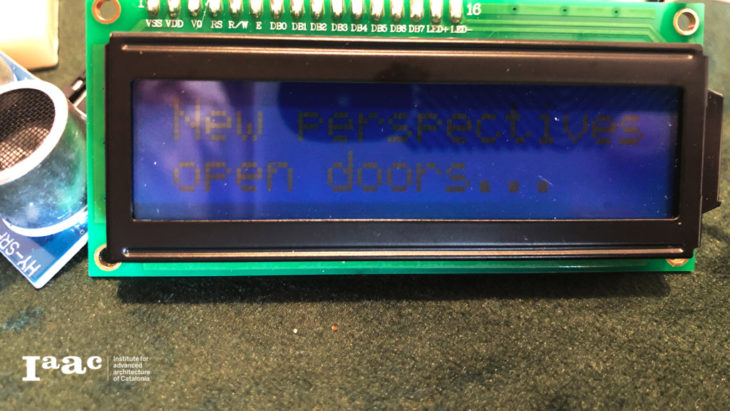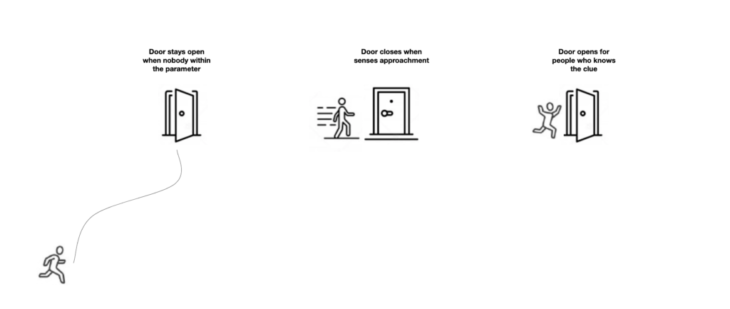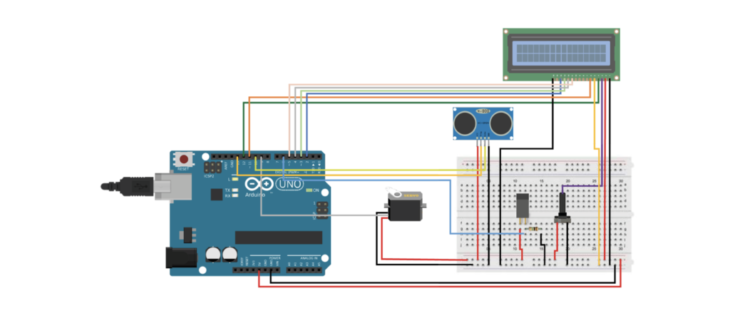NEW PERSPECTIVES OPEN DOORS
ABSTRACT
The states of the door usually link with the sense of security. When door opens bringing fresh air and the sense of communication as well as the sense of insecurity in places.
The purpose of the project is separating the insecurity linked with the states of the door. Instead of the static two stages of the door, it becomes a dynamic component with the help of physical computation, it’ll only close when necessary and easy to be open by customized private trust list. In order to create a more comfortable both psychological and physical environment.

A LITTLE STORY
Mr. Calçot has been invited to his Friend’s Mr. Romesco’s house on a nice Sunday.
When he got near to Friend’s house, he found Mr. Romesco wasn’t there and the door was wide open.
“That’s not quite safe!” Mr Calçot thought to himself.
Then he walked closer, right before he reached the door, the door suddenly closed and an LCD screen appeared saying “ It’s safer than you thought here!”
“Ha, He is playing with me!” Mr. Calçot laughed and wondered how he could get in, overall he thought he was invited! While thinking of that, an LCD screen appeared saying “ New perspectives open doors…”
“That’s the clue!” Mr. Calçot looked around and found a brick has “To Mr. Calçot” on it. He tilted it. 6 The door opened and the LCD appeared “ Welcome, Mr. Calçot!”
“My dear old friend Mr. Romesco!” Mr. Calçot laughed, entered the house and ready to give Mr. Romesco a big hug.
CONCEPT

DIAGRAM

SCHEMATIC
VIDEO
FUTURE STEPS
Testing other combinations of sensors and actuators. My original plan was a combination of piezo and ultrasonic sensor. However, the piezo couldn’t work properly due to interference from the ultrasonic sensor.
Eventually, the development would be a playful home security system with built-in function of a trusted-guests list.
Mr. Calcot visiting friend is a project of IAAC, Institute for Advanced Architecture of Catalonia developed at Masters in Advanced Architecture in 2021/2022 by: Student Wu Yue; faculty Introduction to Programming and Physical Computing

